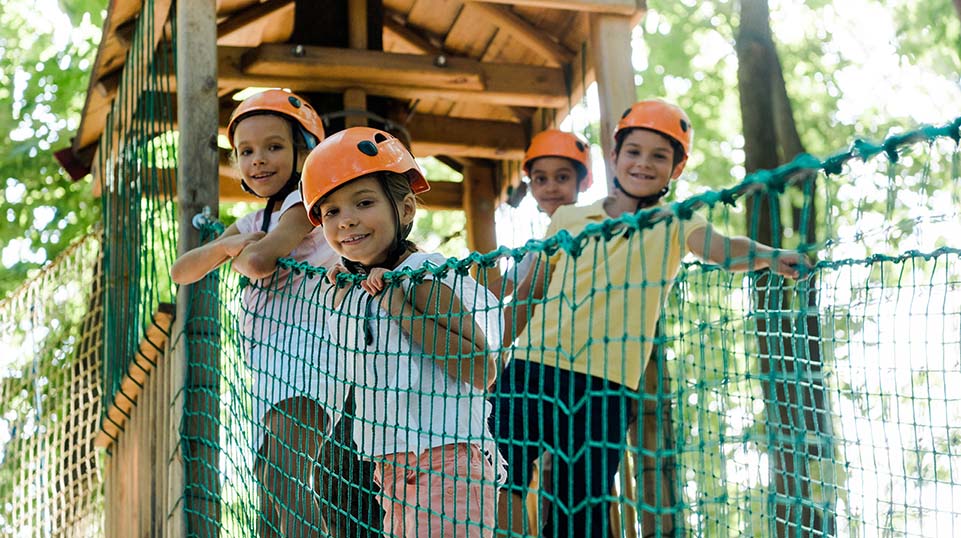Blog

How Occupational Therapy Can Help With Summer Activities
Occupational Therapy, Parent Education
With summer break upon us, it’s time to gear up for some exciting outdoor adventures with your little ones. Whether you’re planning a trip to the beach, embarking on a camping expedition, hitting the playground, or taking a road trip, summer offers countless opportunities for fun-filled family moments.
But as much as we all love summer activities, they can sometimes come with unique challenges, especially when it comes to ensuring your child’s safety, comfort, and engagement. This is where Occupational Therapy (OT) comes into play, providing valuable support and strategies to help your child fully participate and thrive in these summer adventures.
At Westside, we understand the importance of making summer activities accessible and enjoyable for every child. That’s why we’re here to share how Occupational Therapy can be a game-changer, helping your little ones make the most out of their summer experiences and making this summer the best one yet for your family.
Sensory Concerns
Many children who see us at Westside have sensory differences, including sensory sensitivities and sensory-seeking behavior. Nothing can derail a day at the beach like a child who can’t stand the feel of sand, or on the flip side, can’t seem to get covered with enough sand! We also see plenty of kiddos with water aversions, which can make summer activities tricky. In this section, we’ll address how OT can help children with a diverse range of sensory needs.
Desensitization
For children with sensory differences, certain textures like grass, sand, and water can be overwhelming and uncomfortable. The feeling of grass tickling their feet or the sensation of sand slipping through their fingers may trigger anxiety or avoidance behaviors. However, with the help of OT, these challenges can be overcome through a process called desensitization.
Desensitization is a gradual exposure technique that aims to reduce sensory sensitivity and increase tolerance to specific materials or sensations. Our therapists have a range of strategies to help your child become more comfortable and enjoy these sensory experiences.
Introduction through Visuals and Stories:
Before physically encountering grass, sand, or water, occupational therapy may introduce these materials to your child through visuals, such as pictures or videos, or stories that describe the sensations. This is a non-threatening and non-intimidating way for children to begin exploring these textures.
Gradual Exposure:
The key to desensitization is taking it one step at a time. Our therapists will start by gradually exposing your child to the desired material. The first step is acceptance of the material in a nearby space. For example, seeing a jar of sand or grass on the table, but not touching or interacting with it in any way. Once the child has accepted the material, we slowly move on to touching it. As your child becomes more comfortable, they can progress to more extensive contact, such as stepping on grass or playing with sand in a sensory bin.
Play-Based Interventions:
Play is a powerful tool in desensitizing to sensory materials. Our therapists will introduce fun and engaging play activities involving grass or sand or water, allowing your child to explore and interact with these textures in a controlled and supportive environment. This approach helps to shift their perception from discomfort to enjoyment.
Sensory Integration Techniques:
Sensory integration techniques, such as brushing protocols or joint compressions, can also be incorporated into desensitization strategies. These techniques help regulate sensory input and promote a more balanced response, enabling your child to gradually tolerate different materials without feeling overwhelmed.
Desensitization is a personalized process that should be tailored to your child’s unique needs and comfort levels. By employing these desensitization techniques in occupational therapy, your child can gradually develop a greater tolerance for different textures. Over time, our goal is for them to embrace the joy of running barefoot on the grass, building sandcastles at the beach, and splashing around in the pool!
Sensory Seekers
On the flip side of sensory avoiders are sensory seekers. These children have a higher threshold for sensory stimulation and are often seen engaging in repetitive or intense sensory-seeking behaviors. Sensory seeking can manifest in various ways and across different sensory systems, including tactile, vestibular, proprioceptive, auditory, and visual.
When it comes to summer activities, this may look like a child who likes to swing for hours on end, can’t stop running around, takes on climbing challenges that are too advanced for their age, or repeatedly jumps into the pool.
While sensory-seeking behaviors can be beneficial for self-regulation and promoting engagement, they can also interfere with summer experiences. Proprioceptive activities can help sensory seekers meet their sensory needs and promote self-regulation. Here are some common proprioceptive activities used in OT:
Heavy Work Activities:
These activities involve pushing, pulling, or carrying heavy objects. Examples include moving furniture, pushing a cart filled with books, or carrying a weighted backpack. The deep pressure and resistance provided during heavy work help children regulate their sensory system.
Deep Pressure Activities:
Deep pressure activities involve applying firm pressure to the body. This can be achieved through activities like bear hugs, squeezing a therapy ball, or wrapping oneself in a weighted blanket. Deep pressure input has a calming effect on the sensory system and helps children feel grounded.
Wall Push-Ups and Animal Walks:
Wall push-ups and animal walks (such as bear crawls or crab walks) engage the upper body muscles, providing deep proprioceptive input. These activities promote strength, coordination, and body awareness while meeting the sensory needs of seekers.
Tug-of-War and Tug-of-Wall:
Tug-of-war games or tugging against a wall using a resistance band or rope provide intense proprioceptive input to the muscles and joints. These activities help seekers fulfill their need for deep pressure and resistance.
Trampoline Activities:
Jumping on a trampoline allows for deep pressure and rhythmic movement, stimulating the proprioceptive system. It helps sensory seekers regulate their arousal levels and promotes body awareness and coordination.
By engaging in proprioceptive activities, sensory seekers receive the sensory input they crave, which helps them regulate their sensory system, increase body awareness, improve attention, and enhance self-regulation skills. These activities provide a calming and organizing effect, helping children focus and participate more effectively in daily activities.
Emotional Regulation
A goal we frequently work on in OT at Westside is emotional regulation. Many families take vacations over the summer that require long car rides or flights. For children with sensory differences, minimal language, or a limited tolerance to new experiences, these trips can cause stress and anxiety.
In OT, we begin emotional regulation strategies weeks ahead of the planned vacation or outing. We typically begin with visual schedules or social stories where we begin exploring the experience through pictures.
Emotional regulation can be broken down into three separate goals. The first is identifying our own and others’ emotions. This means understanding what emotions we’re feeling as well as looking at the facial expressions of others and using words, sign language, or a device to communicate our feelings.
The second goal is to regulate our own emotions. To do this, we teach kids to use tools like deep breathing techniques and sensory strategies to stay regulated.
The third goal is co-regulation, which means regulating ourselves to others around us. It’s learning to read the room and match your energy to the situation. For example, we’re at the library right now so we can’t be running around screaming. Another part of this is understanding that our actions affect others.
Emotional regulation techniques are important to carry over at home, so our therapists are always equipped to provide strategies for parents to use. Calm, emotionally regulated children will have more fun and be able to handle any new summer experiences!
Please talk to your child’s OT about your summer plans and if there is anything you are concerned about. Our OTs are well-versed in sensory and emotional regulation strategies to help you get the most out of your summer!
If you are interested in services at Westside, please click the link below or call (815) 469-1500 and our team will walk you through the process.




